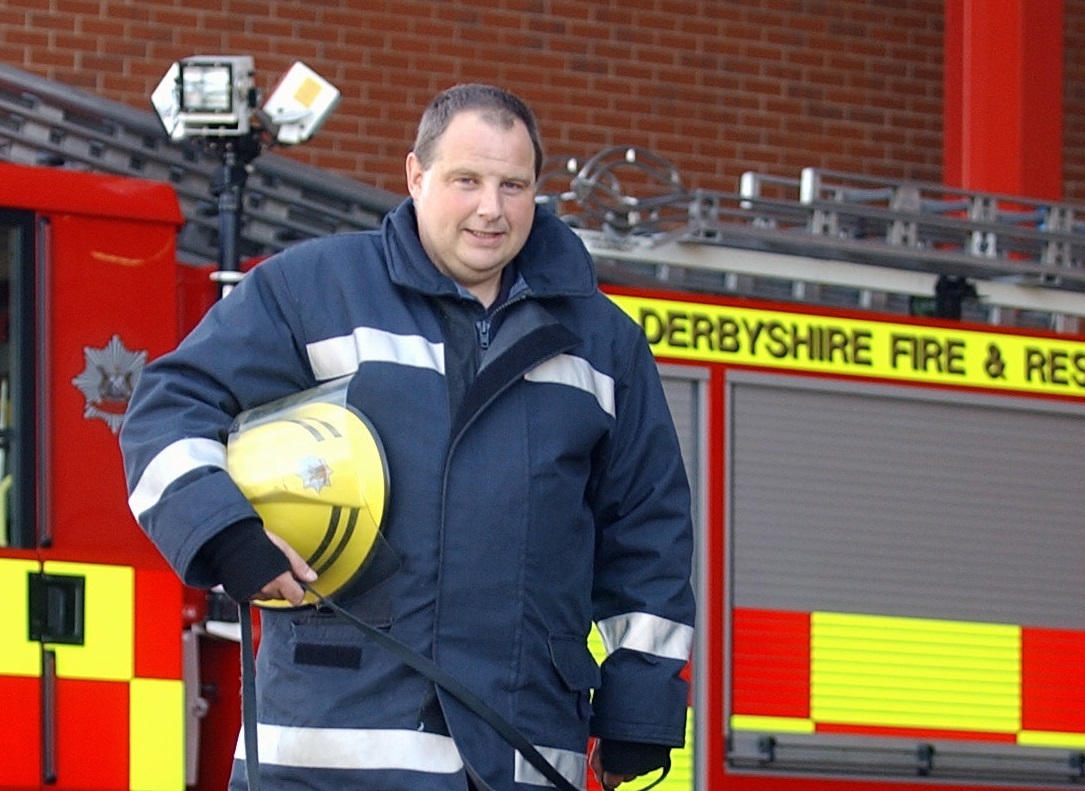
A FIREMAN is pioneering a new child-friendly smoke alarm after discovering most detectors fail to wake youngsters up.
Watch manager Dave Coss, 48, was inspired to find out why children are dying in house fires with working smoke alarms after attending a series of tragedies.
Research he carried out at the University of Dundee could save hundreds of lives by ensuring children are unable to sleep through shrill warnings in future.
Dave said: “What we’re looking at now, during the first stage of the project, is to find a sound that does wake them up, get that sound produced into smoke alarms and then put them into people’s homes.”
The married dad-of-one, who works for Derbyshire Fire and Rescue Service, attended the horrific blaze started deliberately by Mick Philpott in 2012, which claimed the lives of his six children.
Their deaths had a profound effect on Dave and his colleagues who could not understand why the children had not woken up when the alarm went off.
As part of the probe, he carried out tests to find out how many children woke up at night when a smoke alarm was sounding.
The results left him stunned.
Of the 34 children, 20 girls and 14 boys, aged between two and 13, 80% slept through smoke detector alarms.
Each child was tested six times and only seven of the children woke during any of the tests, and just two girls woke on every occasion.
The evidence was used in Philpott’s trial which saw him convicted of manslaughter and jailed for life, along with his wife Mairead and co-conspirator Paul Mosley, who got 17-year terms.
Dave, who has been a firefighter for 23 years, used his research to gain a Masters degree in fire investigation at the University of Strathclyde.
But he continued to see children dying in late-night fires after failing to wake up – and vowed to get to the bottom of the problem.
His PhD at the University of Dundee aims to discover which sounds wake children up.
One early test – similar to the Mosquito devices used to deter young people from congregating in public places – didn’t work. But, out of 50 other tests, promising results are starting to emerge.
With a smoke detector company primed to put Dave’s new generation of detectors into production, it is hoped the product could be on the market within three years.
He said: “As soon as we can find a sound that works, we’re going to mass-produce some gadgets which we’ll test and, as long as they work, we will bring it to the market.”
The question of why children don’t wake up to smoke alarms continues to puzzle academics. It is believed children’s brains may simply be choosing to ignore the warning.
“The anecdotal evidence at the moment relates to the frontal lobes of your brain,” explained Dave.
“It’s called the sleeping rabbit effect.
“When you go to sleep at night you don’t die, your brain’s still working and so you’re still monitoring your surroundings.
“What we think is happening is that the signal is being picked up by the ears, the ears are transporting it to the brain but the brain is then ignoring it – so it’s not waking you up.
“It’s similar to young male drivers who go hurtling towards a bend. They see the bend and the eyes tell their brain they’ve got a problem, but the brain ignores it and says we’ll get round – then they crash.”
A spokesman for the Chief Fire Officers Association said the work could make smoke alarms more effective in the long term.
He added: “This research could potentially help reduce injuries and deaths in the future.”

Enjoy the convenience of having The Sunday Post delivered as a digital ePaper straight to your smartphone, tablet or computer.
Subscribe for only £5.49 a month and enjoy all the benefits of the printed paper as a digital replica.
Subscribe